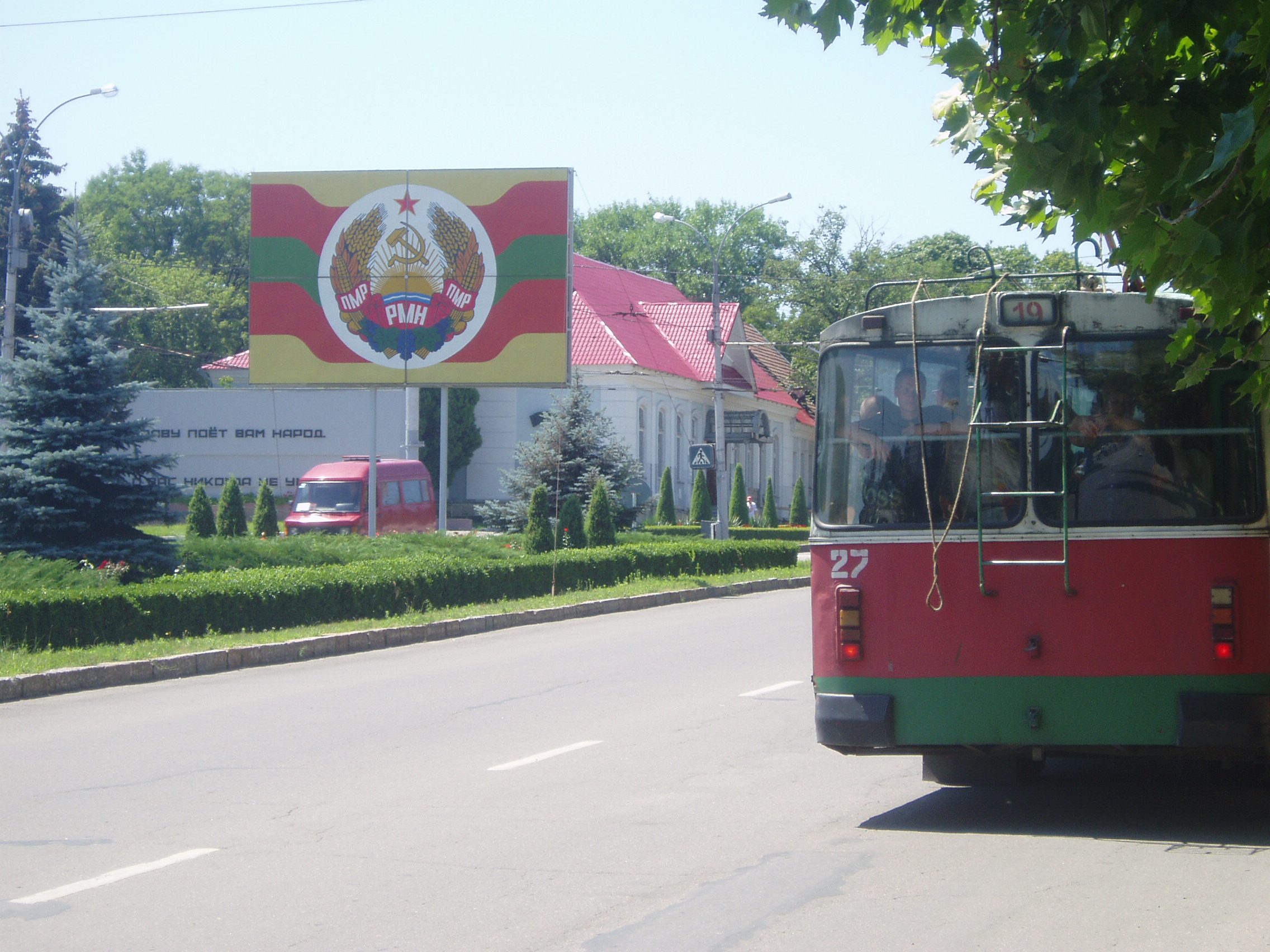
The draw of a breakaway region, where the hammer and sickle still proudly fly and foreigners are viewed with suspicion, is impossible to resist for a certain type of traveller. It turns out that I fit neatly into this odd category. Armed with little more than a printed page of Russian, Romanian and English translations informing the reader that I will not pay any bribes and a camera, my fellow traveller, Neil, and I set off from Chisinau aiming for the largely unrecognised but heavily guarded border.
Nestled into the back of a Mashkruta (a minivan operating like a bus), a sense of wariness becomes more palpable as the van trundles through the countryside, collecting and depositing Russian speaking locals. Given our good fortune of being an EU member state, borders mean little to the Irish who have no memory of the Troubles. For us, a passport check is usually greeted with a smile and a nod, as we go on our merry way. Approaching a demilitarised zone, the atmosphere is a whole different ball game. Divided into two separate zones, the Moldova Transdniestria border is manned by Moldovan and Transdniestrian troops as well as Russian ‘peacekeeping forces’. While it is surely influenced by Western bias, the concept of Russians acting as peacekeepers in a region which identifies itself as a Soviet enclave is near laughable.
With obvious disgruntlement we were ushered off the van as the only foreigners. With the whole mashkruta eyeing us up as we queued for passport control, I ended up in front of an official looking soldier, the hammer and sickle pinned to a crisp green shirt. With a stern demeanour he flicked through my passport. Given that Moldova only gets a minute 11,000 visitors a year, it’s hard to imagine that Transdniestria would receive anything like that. After brief suspicions that I was a reporter (to which I insisted I was a studente), I was given a curt nod and sent on through.
Tiraspol, the capital of Transdniestria, is exactly what you expect for a city in a pro-Russian statelet at the edge of Eastern Europe. It was grey, glum and bleak, but surprisingly developed. Passing through Bendery, a town just west of the Dniester, yet under Transdniestrian control, the first thing you see is the red star and the hammer and sickle, proudly displayed on a decaying pillar. On the opposite side of the road, the reality of capitalism looms, with the most successful team in the Moldovan League, Sheriff FC, boasting an enormous stadium. Owned by the most important family in the statelet, Sheriff is their self-titled nickname, presumably reminiscing to the father’s former KGB past. Sheriff controls the economy of the region, owning almost everything from the supermarkets to the petrol stations and the offices in between. The past is central to the whole ideology and personality of Transdniestria. For this tiny section of Eastern Europe, the Berlin Wall never fell and Communism still reigns supreme. Ignoring the corrupt monopoly that the Sheriff family maintain over the region, statues of Lenin along with declarations of socialism still stand proudly outside government buildings and offices.
It is these statues which almost got us deported (or worse) from this tiny state. The imposing sandstone statue of Lenin with an arm outstretched, presenting himself to the main street was impossible to ignore. Once the camera was in my hands I forgot about the stark warnings against photographing government buildings and got lost in getting the right picture. Luckily a passing woman hissed at us to stop, just in time for us to see a policeman walking in our direction. The scathing warning from the passerby was my most pleasant interaction with the locals. Never have I been to a city which was so hostile to the few visitors it received. Museums were impossible to find and our attempts at asking in Russian were deftly ignored.
Sitting down to an ‘Andy’s Pizza’, Moldova’s most homemade popular chain restaurant, I reflected on my time in Tiraspol. While it wasn’t the most enjoyable six hour excursion it definitely wasn’t dull. The comparison has been made countless times by those who have been before, but it stands true, stepping into Transdniestria is like stepping into a time machine. It drags you back into a world where outsiders are viewed with disdain and suspicion and where the Cold War could evolve into World War 3 at any given moment.
Anti-western sentiment is rife as the rift grows between Moscow and Europe. Despite only being marginally closer to Moscow than Berlin, Transdniestria fully identifies as a Russian enclave. Hostile to both Western Ukraine on its Eastern Border and Moldova to its West, Transdniestria was warned as a potential hotspot for further Russian aggression. While Ukraine comparisons ran wild on our return to Chisinau, there is no desire for Moldovans outside of the enclave to return to Russian rule. That said, the culture differences and perception is so far removed from the rest of the country that is near impossible to imagine Transdniestria unifying anytime soon.






